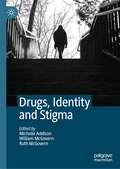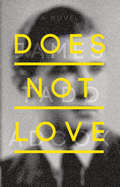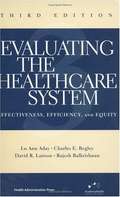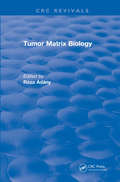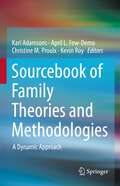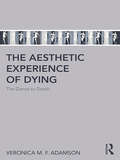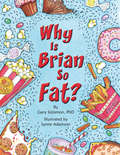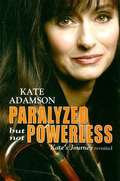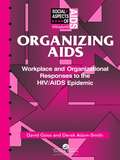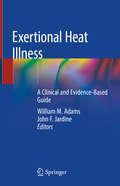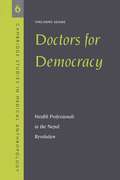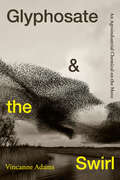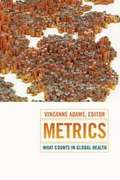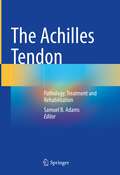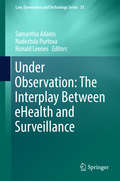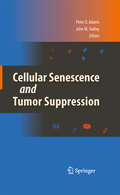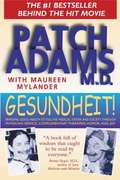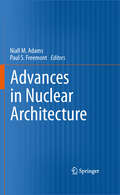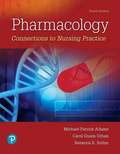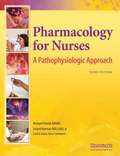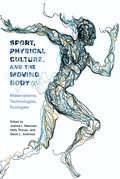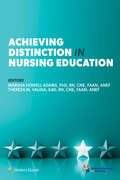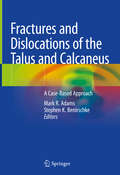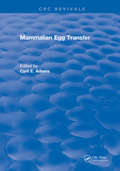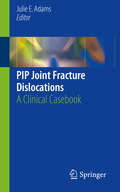- Table View
- List View
Drugs, Identity and Stigma
by Michelle Addison William McGovern Ruth McGovernThis book calls attention to the impact of stigma experienced by people who use illicit drugs. Stigma is powerful: it can do untold harm to a person and place with longstanding effects. Through an exploration of themes of inequality, power, and feeling ‘out of place’ in neoliberal times, this collection focuses on how stigma is negotiated, resisted and absorbed by people who use drugs. How does stigma get under the skin? Drawing on a range of theoretical frameworks and empirical data, this book draws attention to the damaging effects stigma can have on identity, recovery, mental health, desistance from crime, and social inclusion. By connecting drug use, stigma and identity, the authors in this collection share insights into the everyday experiences of people who use drugs and add to debate focused on an agenda for social justice in drug use policy and practice.
Does Not Love
by James Tadd AdcoxSet in an archly comedic, alternate-reality Indianapolis that is completely overrun by Big Pharma, James Tadd Adcox's debut novel chronicles Robert and Viola's attempts to overcome loss through the miracles of modern pharmaceuticals. Their marriage crumbling after a series of miscarriages, Viola finds herself in an affair with the FBI agent who has recently appeared at her workplace, while her husband Robert becomes enmeshed in an elaborate conspiracy designed to look like a drug study.James Tadd Adcox's first book The Map of the System of Human Knowledge was published in 2012 by Tiny Hardcore Press. His work has appeared in TriQuarterly, the Literary Review, PANK, Barrelhouse, and Another Chicago Magazine.
Evaluating the Healthcare System: Effectiveness, Efficiency, and Equity (3rd edition)
by Lu Ann Aday Charles E. Begley David R. Lairson Rajesh BalkrishnanAday and other authors from the School of Public Health and Medicine at the University of Texas introduce fundamental concepts and methods of health services research and illustrate their application to policy analysis, presenting specific examples of health services research at the national, state, and local levels. This third edition draws on a growing body of research on the social and economic determinants of population health. The primary audiences for the book are professionals and graduate students in public health, health administration, and the healthcare professions. Annotation ©2004 Book News, Inc., Portland, OR (booknews.com)
Tumor Matrix Biology (CRC Press Revivals)
by Roza AdanyThis book would like to present the latest findings on different aspects of tumor matrix formation in connection with the tumor progression and metastasis and on alterations in the cellular components of tumor stroma during tumor demarcation and invasion.
Sourcebook of Family Theories and Methodologies: A Dynamic Approach
by Kari Adamsons April L. Few-Demo Christine M. Proulx Kevin RoyThis sourcebook is an unparalleled resource in the field of family science. It provides a comprehensive overview of both traditional and contemporary theories and methodologies to promote a greater understanding of increasingly complex family realities. It focuses on broad developments in research design and conceptualization, while also offering a historical perspective on developments in family science over time, particularly emerging theories from the past several decades. Each chapter summarizes and evaluates a major theory or methodological approach in the field, delving into its main principles; its debates and challenges; how it has evolved over time; its practical uses in policy, education, or further research; and links to other theories and methodologies. In highlighting recent research of note, chapters emphasize the potential for innovative future applications.Key areas of coverage include:· Risk and resilience, family stress, feminist, critical race, and social exchange theories.· Ambiguous loss, intersectionality, Queer, and family development theory.· Life course framework.· Biosocial theory and biomarker methods.· Symbolic interactionism.· Ethnography.· Mixed methods, participatory action research, and evaluation.
The Aesthetic Experience of Dying: The Dance to Death
by Veronica M. AdamsonStructured around a personal account of the illness and death of the author’s partner, Jane, this book explores how something hard to bear became a threshold to a world of insight and discovery. Drawing on German Idealism and Jane’s own research in the area, The Aesthetic Experience of Dying looks at the notion of life as a binary synthesis, or a return enhanced, as a way of coming to understand death. Binary synthesis describes the interplay between dynamically opposing pairs of concepts – such as life and death – resulting in an enhanced version of one of them to move forward in a new cycle of the process. Yet what relevance does this elegant word game have to the shocking diagnosis of serious illness? Struggling to balance reason with sense, thought with feeling, this book examines the experience of caring for someone from diagnosis to death and is illustrated with examples of the return enhanced. The concluding chapter outlines how the tension of Jane’s dying has been resolved as the rhythmic patterns of the lifeworld have been understood through the process of reflecting on the experience. This creative and insightful book will appeal to those interested in the medical humanities. It will also be an important reference for practising and student health professionals.
Why Is Brian So Fat?
by Lynne Adamson Ph.D. Gary SolomonA poignant story of Brian, a twelve-year-old boy who eats instead of feeling to avoid the reality of living with his dysfunctional family.
Paralyzed But Not Powerless: Kate's Journey Revisited
by Kate AdamsonKate's Journey is a touching story of a woman's survival and recovery from a double brain-stem stroke. The book provides information on the warning signs of stroke and teaches us how to meet life threatening challenges with grace and valor. Kate's determination, humor and wisdom are inspiring. Her lessons are a model for anyone who struggles with a terminal illness to reach beyond the pain and fear to over come and celebrate life.
Organizing Aids: Workplace and Organizational Responses to the HIV/AIDS Epidemic (Social Aspects of AIDS)
by Derek Adam-Smith David GossIt is estimated that 90% of those who are HIV positive are in employment. However, the significant body of literature into HIV/AIDS to date has primarily focused on the medical aspects of the disease and its implications for health/social policy. There has been little analysis of the employment implications of HIV/AIDS, and what does exist is essentially descriptive and usually limited to legal features of the employment relationship. This text provides a review of the theoretical and practical issues which bear upon organisational responses to HIV/AIDS. The authors set these responses in a historical and international context, before analysing recent research findings. In the first three chapters, issues are explored through an analysis which highlights international convergences and divergences. The remaining chapters draw on the authors' research to explore the "internal" dynamics of HIV/AIDS in the workplace.
Exertional Heat Illness: A Clinical and Evidence-Based Guide
by William M. Adams John F. JardineThis authoritative work provides clinicians, scientists and students with a comprehensive overview of exertional heat illness. Specifically, it addresses the prevention, recognition, treatment, and care of the various medical conditions that fall within the realm of exertional heat illness. In doing so, the book also offers a setting-specific (that is, athletics, military, occupational, and road race medicine) discussion of exertional heat illness for the consideration of the varied medical providers working in these settings. Clinicians will benefit from the discussion of the evidence-based best-practice considerations that should be made in the management of exertional heat illness. Scientists will benefit from this text in that it will provide them with a review of the current scientific evidence related to exertional heat illness and the translation of evidence to clinical practice – while also discussing directions for future research. Finally, students -- primarily postgraduate students interested in developing a line of research related to exertional heat illness -- will find this title an indispensable text to familiarize themselves with this fascinating field of study. A major contribution to the literature, Exertional Heat Illness: A Clinical and Evidence-Based Guide will be of significant interest to clinicians and scientists at all levels of training and experience, especially professionals in athletic training, emergency medical services, emergency room care, sports medicine and primary care.
Doctors for Democracy: Health Professionals in the Nepal Revolution
by Vincanne AdamsThis book examines the role of the Nepali physicians in the revolutionary changes in 1990. These doctors are trained in the Western tradition, and participate in international scientific debates, yet they have always been concerned to develop a form of medical practice that was relevant to Nepali conditions, and which could speak to local conceptions about health, and so their medical practice was always politicized. Vincanne Adams argues that the commitment of these professionals to the values of science, and to public health, was crucial in their political activity, and that ideas and practices associated with the notions of 'democracy' and of 'science' supported each other. Describing her book as 'a story that explores how very fine the line is between politics and scientific medical truth claims', it therefore encompasses both the modern political history of Nepal and the role of medicine in a poor, largely rural, Hindu kingdom.
Glyphosate and the Swirl: An Agroindustrial Chemical on the Move (Critical Global Health: Evidence, Efficacy, Ethnography)
by Vincanne AdamsIn Glyphosate and the Swirl Vincanne Adams explores the chemical glyphosate—the active ingredient in Roundup and a pervasive agricultural herbicide—as a predicament of contested science and chemically saturated life. Adams traces the history of glyphosate’s invention and its multiple uses as activists, regulators, scientists, clinicians, consumers, and sick people try to determine its safety and harm. Scientific and political debates over glyphosate’s toxicity are agitated into a swirl—a condition in which certainty is continually contested, divided, and multiplied. This movement replicates the chemical’s movement in soils, foods, bodies, archives, labs, and legislative bodies, settling in some places here and in other places there, its potencies changing and altering what it touches with different scales and kinds of impact. The swirl is both an artifact of academic capitalism, activist tactics, and contested scientific facts and a way to capture the complexity of contemporary life with chemicals.
Metrics: What Counts in Global Health
by Vincanne AdamsThis volume's contributors evaluate the accomplishments, limits, and consequences of using quantitative metrics in global health. Whether analyzing maternal mortality rates, the relationships between political goals and metrics data, or the links between health outcomes and a program's fiscal support, the contributors question the ability of metrics to solve global health problems. They capture a moment when global health scholars and practitioners must evaluate the potential effectiveness and pitfalls of different metrics--even as they remain elusive and problematic. Contributors. Vincanne Adams, Susan Erikson, Molly Hales, Pierre Minn, Adeola Oni-Orisan, Carolyn Smith-Morris, Marlee Tichenor, Lily Walkover, Claire L. Wendland
The Achilles Tendon: Pathology, Treatment and Rehabilitation
by Samuel B. AdamsPathology of the Achilles tendon is one of the most commonly written about topics in foot and ankle surgery, yet there is no clear consensus on the management of these injuries; in addition, pathologic aspects of the Achilles tendon are not well understood. This up-to-date resource addresses all aspects of Achilles tendon pathology, management, rehabilitation and complications, including novel aspects of Achilles tendon treatment as well as more detail on operative techniques for Achilles tendon surgery. Sensibly divided into four thematic sections, part I presents general considerations such as anatomy and pathology, the physical exam and imaging modalities, and patient-reported outcomes. The following sections describe current management strategies for acute and chronic injuries and complications, respectively. Both nonoperative and operative techniques are highlighted, from minimally invasive techniques to tendinoscopy and open debridementand biological augmentation. Generous intraoperative photos and figures enhance the presentation, and operative algorithms are clearly elucidated. Bringing together the latest in the diagnosis and management of these common injuries, The Achilles Tendon will be a valuable reference for orthopedic foot and ankle surgeons, sports medicine surgeons, podiatrists and fellows and residents in these areas.
Under Observation: The Interplay Between eHealth and Surveillance
by Samantha Adams Nadezhda Purtova Ronald LeenesThe essays in this book clarify the technical, legal, ethical, and social aspects of the interaction between eHealth technologies and surveillance practices. The book starts out by presenting a theoretical framework on eHealth and surveillance, followed by an introduction to the various ideas on eHealth and surveillance explored in the subsequent chapters. Issues addressed in the chapters include privacy and data protection, social acceptance of eHealth, cost-effective and innovative healthcare, as well as the privacy aspects of employee wellness programs using eHealth, the use of mobile health app data by insurance companies, advertising industry and law enforcement, and the ethics of Big Data use in healthcare. A closing chapter draws on the previous content to explore the notion that people are 'under observation', bringing together two hitherto unrelated streams of scholarship interested in observation: eHealth and surveillance studies. In short, the book represents a first essential step towards cross-fertilization and offers new insights into the legal, ethical and social significance of being 'under observation'.
Cellular Senescence and Tumor Suppression
by Peter D. Adams John M. SedivyAs cells mature they naturally stop dividing and enter a period called senescence. But cellular senescence can also be induced prematurely by certain oncogenes involved in cancer development. Cellular senescence, a growth-arrest program that limits the lifespan of mammalian cells and prevents unlimited cell proliferation, is attracting considerable interest because of its links to tumor suppression.
Gesundheit!
by Patch Adams Maureen MylanderThe inspiring and hilarious story of Patch Adams's quest to bring free health care to the world and to transform the way doctors practice medicine • Tells the story of Patch Adam's lifetime quest to transform the health care system • Released as a film from Universal Pictures, starring Robin Williams Meet Patch Adams, M.D., a social revolutionary who has devoted his career to giving away health care. Adams is the founder of the Gesundheit Institute, a home-based medical practice that has treated more than 15,000 people for free, and that is now building a full-scale hospital that will be open to anyone in the world free of charge. Ambitious? Yes. Impossible? Not for those who know and work with Patch. Whether it means putting on a red clown nose for sick children or taking a disturbed patient outside to roll down a hill with him, Adams does whatever is necessary to help heal. In his frequent lectures at medical schools and international conferences, Adams's irrepressible energy cuts through the businesslike facade of the medical industry to address the caring relationship between doctor and patient that is at the heart of true medicine. All author royalties are used to fund The Gesundheit Institute, a 40-bed free hospital in West Virginia. Adams's positive vision and plan for the future is an inspiration for those concerned with the inaccessibility of affordable, quality health care. Today's high-tech medicine has become too costly, impersonal, and grim. In his frequent lectures to colleges, churches, community groups, medical schools, and conferences, Patch shows how healing can be a loving, creative, humorous human exchange--not a business transaction.
Advances in Nuclear Architecture
by Niall M. Adams Paul S. FreemontThis book provides a snapshot of the state-of-the art in the study of mammalian cell nuclear architecture, and features a diverse range of chapters written by top researchers. A key aspect is an emphasis on precise and repeatable quantitative analysis and simulation in addition to the more familiar biological perspective. The fusion of such material frames the future of the discipline. Quantitative contributions stress reproducible and robust 3D analysis, using a variety of tools ranging from point pattern analysis to shape registration methods. Biological insights include the role of nuclear subdomains in cancer, nuclear molecular motors, and a holistic view of gene transcription.
Pharmacology: Connections To Nursing Practice
by Michael Adams Carol Urban Rebecca SutterA patient-centered approach to pharmacology in nursing practice Pharmacology: Connections to Nursing Practice links pharmacology to nursing practice and patient care. Features illuminate connections between pharmacology and nursing practice, from patient scenarios and practice applications, to lifespan considerations, alternative therapies, and gender and cultural influences. The use of prototype drugs helps nurses learn a vast range of medications, while organization by body systems and diseases places drugs in the context of their therapeutic applications. The 4th edition includes more than 30 new FDA-approved drugs, more than 20 new visuals clarifying concepts, and a new feature developing the clinical decision-making skills of advanced
Pharmacology for Nurses: A Pathophysiologic Approach (3rd Edition)
by Michael Patrick Adams Leland Norman Holland Jr. Carol Q. UrbanThe third edition of Pharmacology for Nurses: A Pathophysiologic Approach has been thoroughly updated to reflect current pharmacologic drugs and processes. This book is structured to present pharmacology and pathology together, so students can more easily grasp the interrelationship between these subjects and patient care.
Sport, Physical Culture, and the Moving Body: Materialisms, Technologies, Ecologies (Critical Issues in Sport and Society)
by Mary Louise Adams Kiri Baxter Douglas Booth Kyle S Bunds Michael D. Giardina Mariana Clark Simon C Darnell Samantha Frost Simone Fullagar Pirkko Markula Mary G. McDonald Jennifer Sterling Christopher McLeod Matthew G. Hawzen Richard Pringle Oliver Rick Jacob J. Bustad Samantha King Shannon Leigh Jette Katelyn Esmonde David Andrews Carolyn Pluim Gavin WeedonThe moving body—pervasively occupied by fitness activities, intense training and dieting regimes, recreational practices, and high-profile sporting mega-events—holds a vital function in contemporary society. As the body moves—as it performs, sweats, runs, and jumps—it sets in motion an intricate web of scientific rationalities, spatial arrangements, corporate imperatives, and identity politics (i.e. politics of gender, race, social class, etc.). It represents vitality in its productive and physiological capacities, it drives a complex economy of experiences and products, and it is a meaningful site of cultural identities and politics. Contributors to Sport, Physical Culture, and the Moving Body work from a simple premise: as it moves, the material body matters. Adding to the burgeoning fields of sport studies and body studies, the works featured here draw upon the traditions of feminist theory, posthumanism, actor network theory, and new materialism to reposition the physical, moving body as crucial to the cultural, political, environmental, and economic systems that it constitutes and within which is constituted. Once assembled, the book presents a study of bodies in motion—made to move in contexts where technique, performance, speed, strength, and vitality not only define the conduct therein, but provide the very reason for the body’s being within those economies and environments. In so doing, the contributors look to how the body moving for and about rational systems of science, medicine, markets, and geopolity shapes the social and material world in important and unexpected ways. In Sport, Physical Culture, and the Moving Body, contributors explore the extent to which the body, when moving about both ostensibly active body spaces (i.e., the gymnasium, the ball field, exercise laboratory, the track or running trail, the beach, or the sport stadium) and those places less often connected to physical activity (i.e. the home, the street, the classroom, the automobile), is bounded to technologies of life and living; and to the political arrangements that seek to capitalize upon such frames of biological vitality. To do so, the authors problematize the rise of active body science (i.e. kinesiology, sport and exercise sciences, performance biotechnology) and the effects these scientific interventions have on embodied, lived experience. Contributors to Sport, Physical Culture, and the Moving Body will be engaging a range of new and emerging theoretical perspectives, including new materialist, political ecology, developmental systems theory, and new material feminist approaches, to examine the actors and assemblages of movement-based material, political, and economic production. In so doing, contributors will vividly and powerfully illustrate the extent to which a focus on the fleshed body and its material conditions can bring forth new insights or ontological and epistemological innovation to the sociology of sport and physical activity. They will also explore the agency of the body as and amongst things. Such a performative materialist approach explicates how complex assemblages of sport and physical activity—bringing into association everything from muscle fibers and dietary proteins to stadium concrete or regional aquifers—are not only meaningful, but ecological. By focusing on the confluence of agentive materialities, disciplinary technologies, vibrant assemblages, speculative realities, and vital performativities, Sport, Physical Culture, and the Moving Body promises to offer a groundbreaking departure from representationalist tendencies and orthodoxies brought about by the cultural turn in sport and physical cultural studies. It brings the moving body and its physics back into focus: recentering moving flesh and bones as locus of social order, environmental change, and the global political economy.
Achieving Distinction in Nursing Education (NLN)
by Marsha Adams Theresa ValigaAchieving Distinction in Nursing Education, based on the National League for Nursing (NLN) Hallmarks of Excellence in Nursing Education Model, provides in-depth discussions of the eight core elements for superior nursing education: Engaged Students Diverse, Well-Prepared Faculty Culture of Continuous Quality Improvement Innovative, Evidence-Based Curriculum Innovative, Evidence-Based Approaches to Facilitate and Evaluate Learning Resources to Support Program Goal Attainment Commitment to Pedagogical Scholarship Effective Institutional and Professional Leadership This book also presents accompanying indicators to assist nurse educators in assessing the strengths of their programs and identifying areas for further development. Featuring contributions from 15 recognized experts and thought leaders in nursing education, administration, and research, this innovative resource is designed to challenge and inspire you to advance toward unparalleled outcomes for your career and your institution.
Fractures and Dislocations of the Talus and Calcaneus: A Case-Based Approach
by Mark R. Adams Stephen K. BenirschkePresenting an in-depth discussion of the surgical management of fractures and dislocations of the talus and calcaneus, this text utilizes both an up-to-date review of the literature, providing a broad understanding of the topic, and a case-based approach, delving into the finer details of how to care for these injuries and providing an outline of the specific surgical techniques that make anatomic repair of these injuries possible. Beginning with a review of the general principles of foot trauma care, the chapters then proceed thematically to cover various fractures of the talus, tarsal dislocations, fractures of the calcaneus, and post-traumatic care and reconstruction. There is a focus throughout on the care of the post-traumatic sequelae of these injuries, as these frequently lead to chronic issues about the foot and ankle. Amply illustrated with figures, radiographs and intra-operative photographs, Fractures and Dislocations of the Talus and Calcaneus will be an excellent resource for orthopedic, podiatric and trauma surgeons and residents.
Mammalian Egg Transfer
by Lewis AdamsEgg transfer was first performed in 1890, but for half a century it received scant attention. However, since 1950 the technique has become increasingly widely used - in the laboratory for fundamental studies and more recently in practice, both veterinary and medical, to boost reproductive potential of genetically superior cattle and to overcome sterility due to impaired rubal function in women. As a result, a considerable body of literature has accumulated, totaling well in excess of a thousand references. But till now there has not been a single comprehensive text devoted solely to this subject. The present work was designed to meet that need at a time when the field is fast expanding with new techniques and approaches constantly being evolved. One need only cite the tremendous rate of progress in human egg transfer in the last three years. The work embraces laboratory and farm animals and primates, including man, altogether representing a total of 16 species.
PIP Joint Fracture Dislocations
by Julie E. AdamsComprised exclusively of clinical cases covering injuries to the proximal interphalangeal (PIP) joint, this concise, practical casebook will provide orthopedic surgeons and hand surgeons with the best real-world strategies to properly manage the multifaceted surgical techniques for management of the PIP. Each chapter is a case that opens with a unique clinical presentation, followed by a description of the diagnosis, assessment and management techniques used to treat it, as well as the case outcome and clinical pearls and pitfalls. Cases included illustrate both operative and non-operative treatment of volar fracture dislocations, dorsal block splinting and pinning, ORIF with screw fixation, volar plate and hemi hamate arthroplasty, PIP joint fusion, and pediatric PIP joint injuries, among others. Pragmatic and reader-friendly, PIP Joint Fracture Dislocations: A Clinical Casebook will be an excellent resource for orthopedic surgeons and Hand surgeons confronted with both common and complex fractures to the PIP joint.
